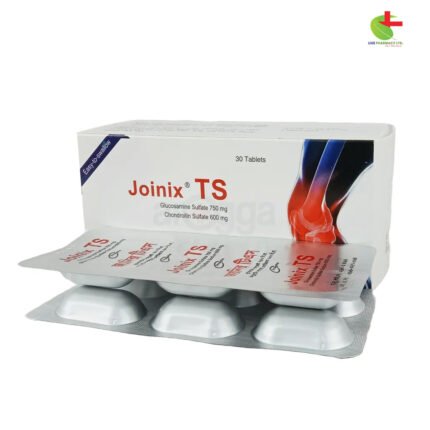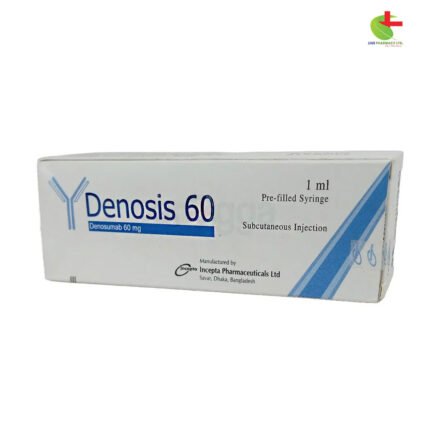Prosol IV
500.00৳ Bottle (500ml)
- Amino Acid IV solution provides essential amino acids for protein synthesis, supporting patients who need intravenous nutrition.
- Ideal for use in post-surgery recovery, burns, and organ insufficiencies.
- Helps achieve positive nitrogen balance, crucial for faster healing and tissue repair.
- Clear, sterile solution with essential and non-essential amino acids, electrolytes, and D-Sorbitol for balanced nutrition.
 Brand
Brand
|
Incepta Pharmaceuticals Ltd |
|---|---|
 Generics
Generics
|
Amino Acid, D-Sorbitol & Electrolytes |
 Type
Type
|
IV Infusion |
Indications
Amino Acid IV solution provides essential amino acids for protein synthesis in patients requiring intravenous nutrition. Ideal for individuals with foundational amino acid needs, it also supports quicker recovery post-surgery, burns, renal or hepatic insufficiency, and cancer care.
Take medication as directed by a registered healthcare professional.
Composition
Each 100 ml solution (5%) includes:
Essential Amino Acids:
- L-Isoleucine 0.352 g
- L-Leucine 0.490 g
- L-Lysine Hydrochloride 0.430 g
- L-Methionine 0.225 g
- L-Phenylalanine 0.533 g
- L-Threonine 0.250 g
- L-Tryptophan 0.090 g
- L-Valine 0.360 g
- L-Histidine 0.250 g
- L-Tyrosine 0.025 g
Non-Essential Amino Acids:
- L-Arginine 0.500 g
- L-Aspartic Acid 0.250 g
- L-Glutamic Acid 0.075 g
- L-Alanine 0.200 g
- L-Cystine 0.010 g
- Glycine (Aminoacetic Acid) 0.760 g
- L-Proline 0.100 g
- L-Serine 0.100 g
Additional Components:
- D-Sorbitol 5.000 g
Electrolytes
- Sodium (Na+): 57 mmol/L
- Potassium (K+): 25 mmol/L
- Magnesium (Mg++): 1.2 mmol/L
- Chloride (Cl-): 87 mmol/L
- Acetate (CH3COO-): 25 mmol/L
Nutrition Content
- Total Nitrogen: 7.25 g/L
- Total Energy: 1551 kj/L (371.14 Kcal/L)
Pharmacology
This sterile IV solution combines crystalline amino acids, D-Sorbitol, and essential electrolytes for effective parenteral nutrition. As a nitrogen source, it includes both essential and non-essential amino acids essential for protein synthesis. This formulation helps achieve a positive nitrogen balance during post-surgery recovery and extended IV nutrition. Clear and pale yellow, its pH ranges between 5.0 and 7.0.
Dosage & Administration
Protein maintenance dosage varies by patient needs and metabolic stress levels:
- Minimal stress, normal nutrition: 0.10-0.15 g nitrogen/kg/day
- Moderate stress or malnutrition: 0.15-0.20 g nitrogen/kg/day
- Severe catabolism (burns, sepsis, trauma): 0.20-0.25 g nitrogen/kg/day
This equates to 15-35 ml Amino Acids IV/kg/day. For obese patients, dosing should be based on ideal body weight. Typical infusion rates range from 1.4 to 2.8 ml per minute (30-60 drops).
- For children/infants: 28-35 ml/kg body weight per day, with gradual rate increases during the first week.
Take medication as directed by a registered healthcare professional.
Interactions
No expected pharmacological interactions at recommended dosages.
Contraindications
Avoid use in patients with amino acid metabolic disorders, severe liver dysfunction, or uncontrolled uremia without dialysis. Also, contraindicated in patients with hyperosmolar nonketotic diabetic coma.
Side Effects
Generally well tolerated; however, nausea, vomiting, flushing, and sweating can occur at high infusion rates. Temporary liver test elevation and hypersensitivity reactions have been reported. Thrombophlebitis risk increases with peripheral vein use, mitigated by simultaneous fat emulsion infusion.
Use in Pregnancy & Lactation
Reported as safe in pregnancy; however, no animal studies have been conducted.
Precautions & Warnings
Amino acid IV infusion may lead to increased urinary excretion of trace elements like copper and zinc. Monitor zinc levels for long-term administration. In premature infants, monitor phenylalanine levels. Exercise caution in patients with diabetes, heart failure, or renal issues, adjusting insulin if necessary for hyperglycemia. Patients at risk of thiamine deficiency should consider supplementation before administering glucose-containing solutions.
Overdose Effects
Overdosage may cause nausea, sweating, dehydration, or hyperglycemia. Thrombophlebitis may occur if peripheral veins are used. In case of overdose symptoms, reduce or stop infusion as needed.
Therapeutic Class
Parenteral nutritional preparations.
Storage Conditions
Store between 15°C and 25°C, protected from light. Avoid freezing. Keep out of reach of children.













Reviews
There are no reviews yet.